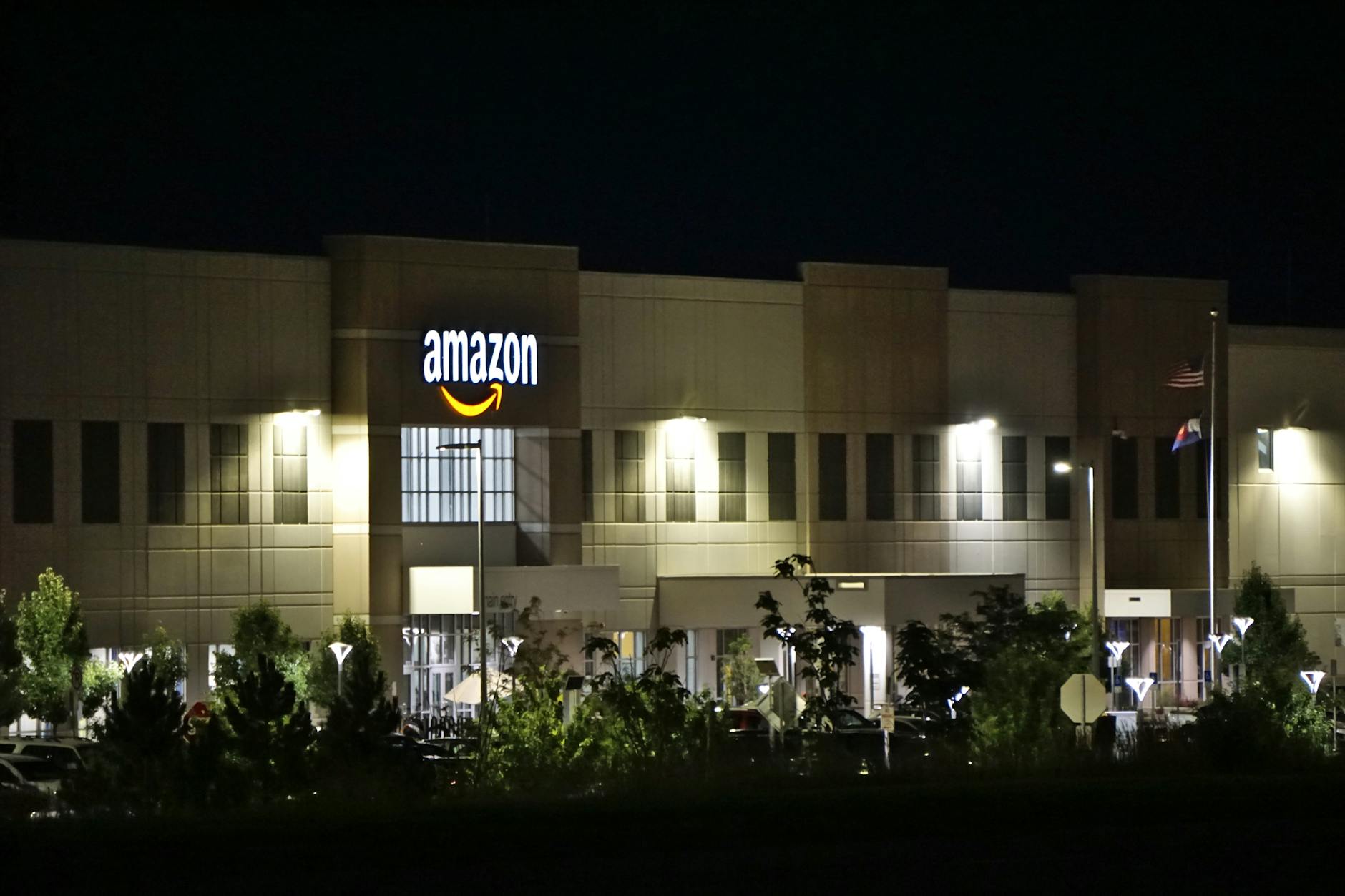Have you ever pondered how Amazon evolved from a humble online bookstore into a global technology titan within just two decades? Risk and growth expert Steve Anderson, alongside author and director Karen Anderson, unveil the secret in their book, The Bezos Letters: 14 Principles to Grow Your Business Like Amazon. Drawing from the shareholder letters written by Jeff Bezos between 1997 and 2018, they identify specific Cycles of Growth and 14 “Growth Principles” that have propelled Amazon to unprecedented success. This blog post delves deep into these principles, revealing how they can be applied to any business to foster a mindset of innovation and exponential growth.
Overview of The Bezos Letters
The Journey from Bookstore to Tech Giant
Amazon’s trajectory from a niche online bookstore to a sprawling tech conglomerate is a testament to visionary leadership and strategic risk-taking. Jeff Bezos’ shareholder letters, spanning over two decades, provide a blueprint for this transformation. The Bezos Letters distills these insights into 14 actionable principles, each aimed at fostering growth and innovation.
Key Growth Principles
Business Risk as an Investment
Leaders should see business risk as an investment rather than something to be avoided. Bezos’ philosophy on risk is clear: view it as a necessary investment for future opportunities. This approach is evident in Amazon’s ventures into emerging technologies and markets, often before they become mainstream.
Key Takeaways:
- Embrace risk as a pathway to innovation.
- Invest in future opportunities even when the outcome is uncertain.
- Learn from both successes and failures to continuously improve.
Leveraging Existing Infrastructures
Take advantage of existing infrastructures to facilitate growth. Amazon’s rapid delivery system, for instance, wouldn’t be possible without leveraging the established networks of FedEx and UPS. By piggybacking on existing infrastructures, Amazon could offer unparalleled delivery speed and reliability.
Key Takeaways:
- Identify and utilize existing resources to accelerate growth.
- Build partnerships that can enhance your service delivery.
- Focus on improving efficiency by leveraging available infrastructures.
A/B Testing and Customer-Driven Innovation
Utilize A/B testing and invent on behalf of the customer to drive industry forward. A/B testing allows Amazon to experiment with new ideas at low risk, ensuring that customer needs are met even before they are fully realized by the customers themselves.
Key Takeaways:
- Use A/B testing to validate new ideas.
- Innovate with the customer’s needs as the primary focus.
- Continuously refine your offerings based on customer feedback and data.
Identifying and Advancing Core Competencies
Identify what your company is known for, then experiment with advances in that marketplace. Amazon’s move into digital publishing is a prime example of this principle. By offering monthly royalties, they attracted more authors and revolutionized the publishing industry.
Key Takeaways:
- Understand your core strengths and market position.
- Innovate within your niche to stay ahead of competitors.
- Offer unique value propositions that set you apart.
Cycles of Growth
Companies can repeat a series of growth cycles: Test, Build, Accelerate, and Scale. These cycles help in achieving sustained growth by fostering a culture of continuous innovation and improvement.
Key Takeaways:
- Implement a structured approach to innovation.
- Encourage experimentation and learning from failures.
- Streamline processes and promote ownership to accelerate growth.
Encouraging “Successful Failure”
Encourage “successful failure” within the company. Bezos views failure as a stepping stone to success. Amazon’s failed ventures, like the Fire Phone, provided invaluable lessons that led to future successes like the Kindle and Alexa.
Key Takeaways:
- View failures as opportunities to learn and improve.
- Foster a culture that encourages experimentation.
- Use lessons from failures to drive future innovation.
Betting on Big Ideas
Bet on big ideas, but start small. Amazon Prime began as an experiment with free shipping on orders over $25, which eventually evolved into the subscription service we know today.
Key Takeaways:
- Take calculated risks on big ideas.
- Start with small experiments to validate concepts.
- Scale successful ideas strategically.
Empowering Employees at Every Level
No one knows their job better than the person who does it every day. Amazon empowers employees to innovate and improve their work processes, fostering a culture of ownership and responsibility.
Key Takeaways:
- Empower employees to take initiative and innovate.
- Reward successful innovations and learn from failures.
- Foster a sense of ownership across all levels of the company.
Customer Obsession
Obsess over customers. Amazon’s relentless focus on customer experience drives its growth. By prioritizing customer needs, Amazon ensures long-term loyalty and satisfaction.
Key Takeaways:
- Prioritize customer needs and satisfaction.
- Develop a customer-centric approach to innovation.
- Continuously improve the customer experience.
Long-Term Thinking
Apply long-term thinking to every facet of your business. Bezos emphasizes decisions that benefit Amazon in the long run, often defying short-term Wall Street expectations.
Key Takeaways:
- Focus on long-term value rather than short-term gains.
- Make strategic decisions that ensure future growth.
- Invest in sustainable practices and technologies.
The Flywheel Concept
Elements of your business should work as cogs on a wheel – each adding momentum to your central goal or “Flywheel.” Amazon’s flywheel revolves around growth, with each aspect of the business contributing to this central objective.
Key Takeaways:
- Identify your company’s primary goal and align activities to support it.
- Create a self-reinforcing cycle that drives growth.
- Continuously improve each component of your flywheel.
High-Velocity Decision-Making
Meaningful growth is stymied by poor decision-making. Bezos advocates for swift decision-making to maintain momentum and drive growth.
Key Takeaways:
- Differentiate between major and minor decisions.
- Make decisions quickly with the best available information.
- Encourage a culture of rapid decision-making and iteration.
Simplifying Complexity
Make complexity simple – identify and eliminate pain points for the customer. Amazon’s frustration-free packaging is an example of simplifying complexity for a better customer experience.
Key Takeaways:
- Simplify processes and products to enhance user experience.
- Identify and address customer pain points.
- Use technology to streamline and improve service delivery.
Accelerating Growth with Technology
Be intentional when you use technology to grow your business. Amazon’s strategic use of technology, such as cloud computing with AWS, has been a key driver of its growth.
Key Takeaways:
- Stay on the cutting edge of technological advancements.
- Use technology to scale and improve business operations.
- Turn internal technological solutions into new revenue streams.
Implementing the Principles in Your Business
To apply these principles in your own business, start by assessing your current strategies and identifying areas for improvement. Implement a culture of innovation, encourage risk-taking, and always keep the customer at the forefront of your decision-making. By embracing long-term thinking and leveraging technology, you can drive sustained growth and remain competitive in your industry.
FAQs
What is the primary focus of Amazon’s growth strategy?
The primary focus of Amazon’s growth strategy is customer obsession and continuous innovation, driven by a willingness to take risks and learn from failures.
How does Amazon encourage innovation among its employees?
Amazon empowers employees at all levels to experiment with new ideas, rewarding successful innovations and using failures as learning opportunities.
What is the significance of the flywheel concept in Amazon’s business model?
The flywheel concept is central to Amazon’s business model, with each aspect of the business contributing to and reinforcing overall growth.
How does Amazon approach decision-making to maintain high growth?
Amazon differentiates between major and minor decisions, making swift decisions with the best available information to maintain momentum and drive growth.
What role does technology play in Amazon’s growth?
Technology is a key driver of Amazon’s growth, with strategic use of innovations like AWS to scale and improve business operations while creating new revenue streams.
Wrapping Up
The principles outlined in The Bezos Letters provide a roadmap for any business seeking to emulate Amazon’s success. By fostering a culture of innovation, customer obsession, and strategic risk-taking, you can position your business for exponential growth and long-term success.
By internalizing these principles and adapting them to your unique business context, you can cultivate a growth-oriented mindset and drive your business toward sustained success. For more insights on applying these principles, explore our other articles on Steffi’s Blogs.



